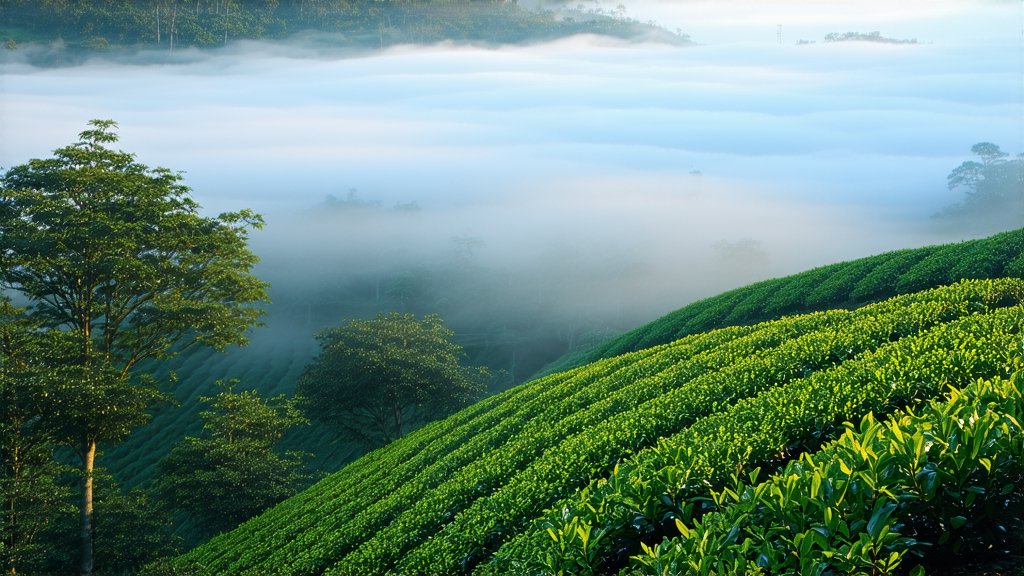
In the vast and varied landscape of Chinese tea culture, few varieties captivate the senses and imagination quite like Junshan Yinzhen, a distinguished member of the yellow tea family. This exquisite beverage, originating from the lush mountains of Hunan province, stands as a testament to the rich heritage and intricate artistry that define China's centuries-old relationship with tea. As we embark on a journey through the history, varieties, production process, and tasting techniques of Junshan Yinzhen, prepare to uncover the golden secrets that make this tea a cherished gem among connoisseurs worldwide.
A Glimpse into History
The story of Junshan Yinzhen begins in the misty highlands of Junshan County, where legend has it that tea was discovered by chance over two thousand years ago. Unlike its more famous counterparts, such as green or black tea, yellow tea has always been a niche product, known primarily within China and revered for its unique processing methods and delicate flavor profile. It wasn't until recent decades that Junshan Yinzhen started gaining international recognition, thanks to global interest in diverse and authentic tea experiences.
Varieties and Classification
Junshan Yinzhen belongs to the category of yellow tea, which is further divided into several subcategories based on regional characteristics and subtle differences in processing. Among these, Junshan Yinzhen stands out for its exceptional quality and distinct taste. There are two primary types of Junshan Yinzhen: Huang Ya Zhi (Silver Needle), characterized by its slender, needle-like leaves covered in fine white hairs, reminiscent of silver threads; and Huang Ya (Golden Buds), featuring slightly larger buds with a golden hue. Both types share a common lineage but differ in appearance and nuanced flavors.
The Art of Crafting Junshan Yinzhen
The production of Junshan Yinzhen is an art form that requires meticulous attention to detail and adherence to traditional methods passed down through generations. The process can be broadly divided into several stages:
-
Harvesting: Only the youngest tea芽 buds are handpicked during the early spring, typically around Qingming Festival (Tomb Sweeping Day), when the first flush of growth is at its most tender and nutrient-rich.
-
Withering: The freshly picked leaves undergo a slow withering process under controlled conditions, allowing them to lose moisture gradually while preserving their essential oils and flavors.
-
Fixation: Unlike other teas that use high heat to fixate the leaves quickly, yellow tea undergoes a gentler process known as "闷黄" (mēnhuáng), or "smothering yellow," where the leaves are partially covered to encourage a slight fermentation. This step imparts the distinctive yellow color and mellow taste characteristic of yellow tea.
-
Shaking and Drying: After fixation, the leaves are shaken to remove excess moisture and then dried slowly, often using charcoal fires or specialized drying rooms, to achieve the perfect balance of moisture content and flavor concentration.
-
Sorting and Packaging: Finally, the dried tea is carefully sorted by size and quality before being packaged for sale or further aging, which can enhance its complexity and depth of flavor over time.
Tasting the Golden Elixir
To truly appreciate Junshan Yinzhen, one must engage in a mindful tasting ritual that honors its subtlety and elegance. Here’s a guide to savoring this golden elixir:
-
Preparation: Use water just off the boil (around 80-85°C) to avoid scalding the delicate leaves. Rinse the teapot and cups with hot water to warm them up.
-
Infusion: Place approximately 3-5 grams of Junshan Yinzhen per 150ml of water ratio into a Yixing clay pot or a glass teapot for visual appreciation. Steep for about 2-3 minutes for the first infusion. Subsequent infusions can be steeped longer, adjusting according to personal preference.
-
Observation: Watch as the pale yellow liquor unfurls from the tightly rolled leaves, revealing a clear, amber hue that glows like liquid gold in the light.
-
Aroma: Inhale deeply before sipping to capture the subtle fragrance, which may include notes of orchids, fresh grass, and a hint of sweetness.
-
Taste: Take small sips, allowing the tea to coat your palate fully. Notice the smooth, mellow texture and the gentle sweetness that follows, leaving a refreshing aftertaste that lingers.
-
Appreciation: Reflect on the experience, appreciating not just the taste but also the craftsmanship and history encapsulated in each cup.
Conclusion
Junshan Yinzhen is more than just a beverage; it embodies the essence of Chinese tea culture—a harmonious blend of nature's bounty, human ingenuity, and centuries-old traditions. As you delve into the world of this remarkable yellow tea, remember that every sip tells a story, connecting you to a legacy that transcends time and borders. Embrace the journey, and let Junshan Yinzhen transport you to the misty mountains of Hunan, where tea dreams are born.